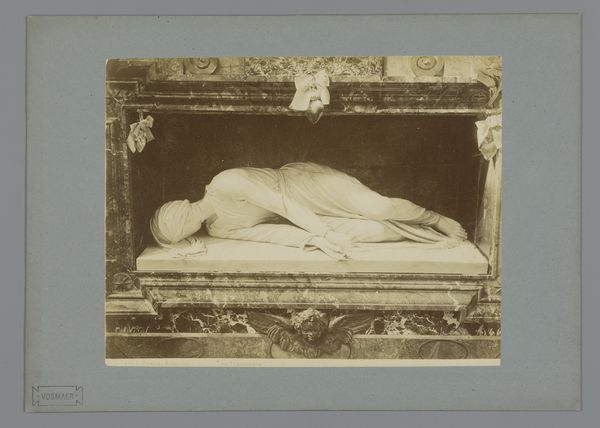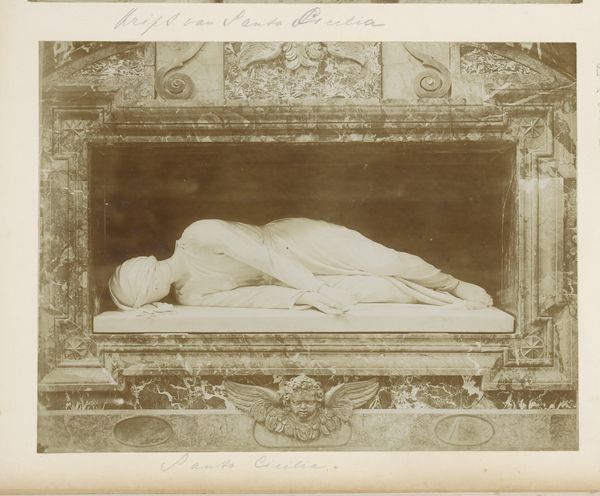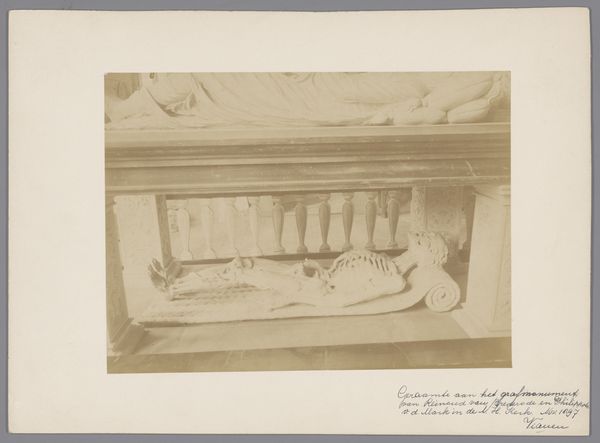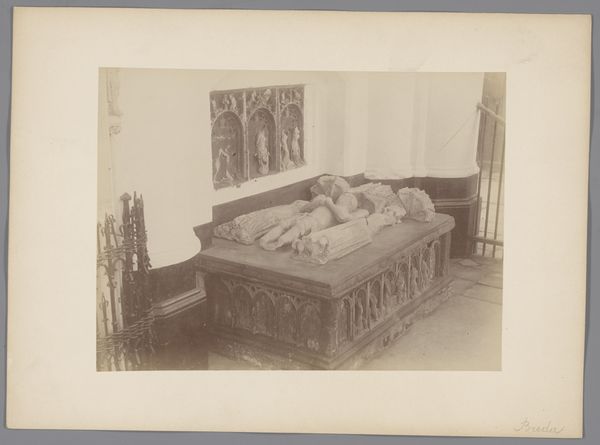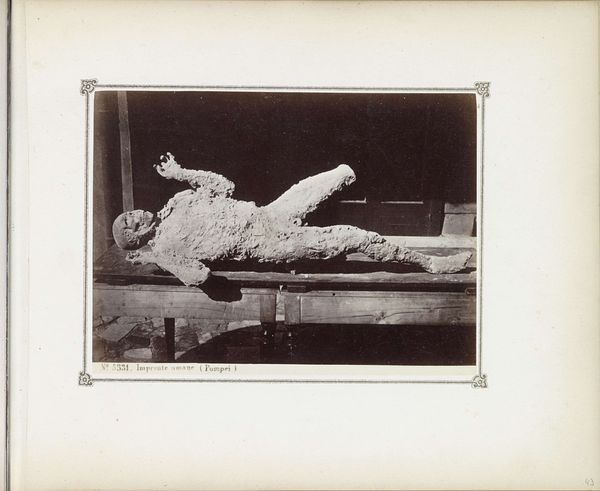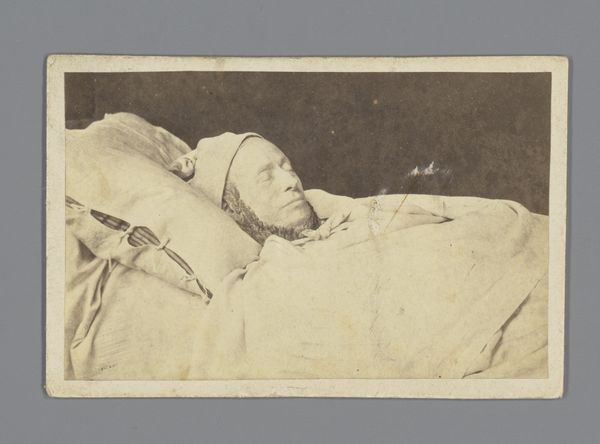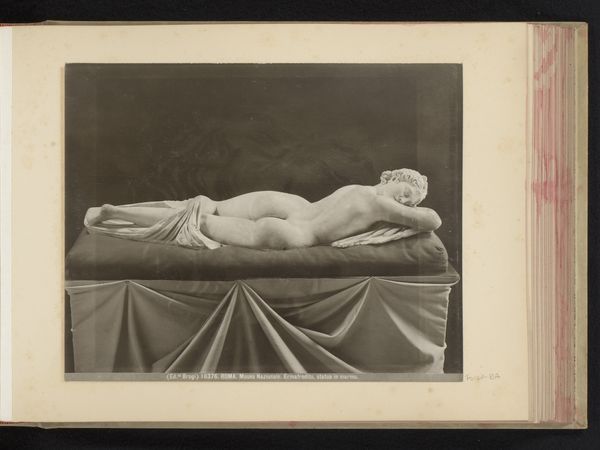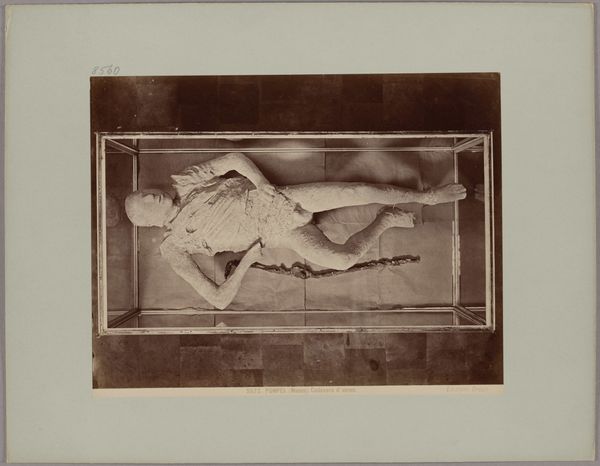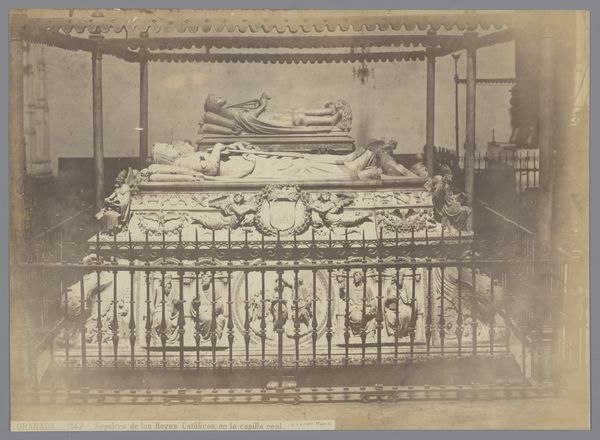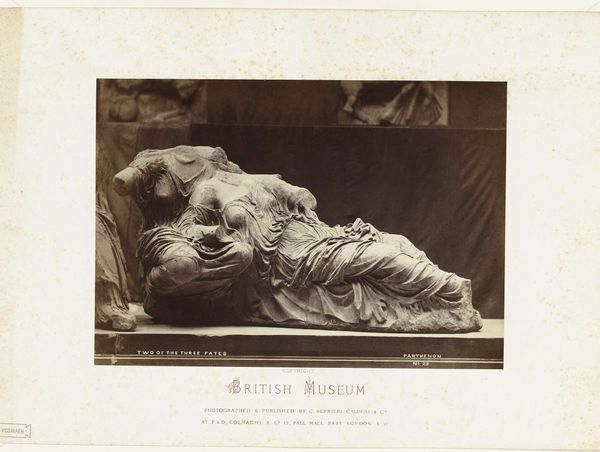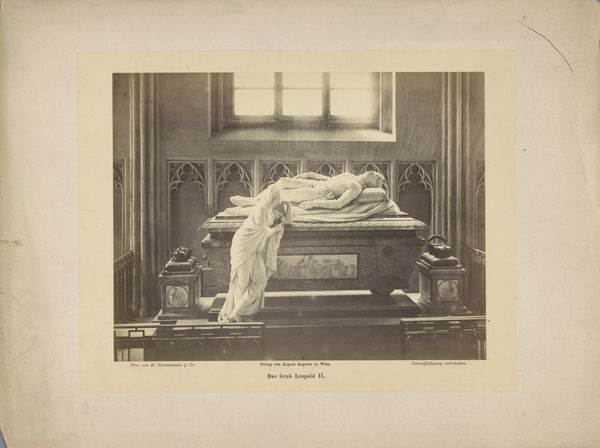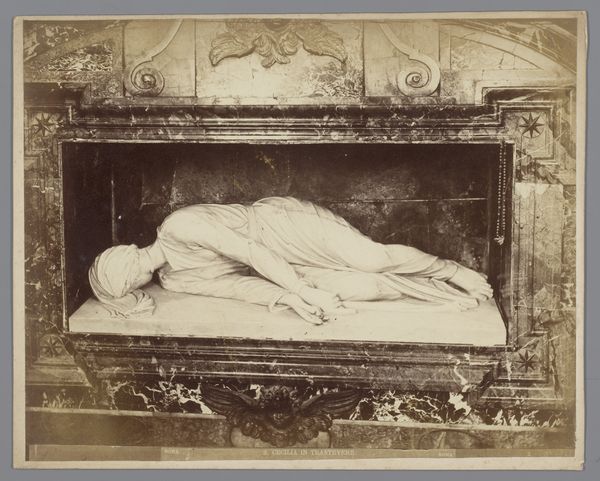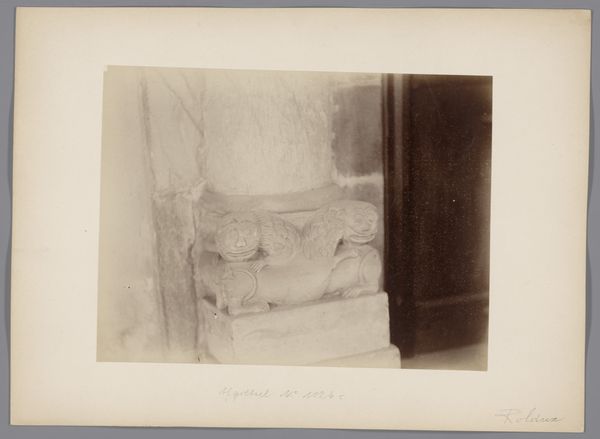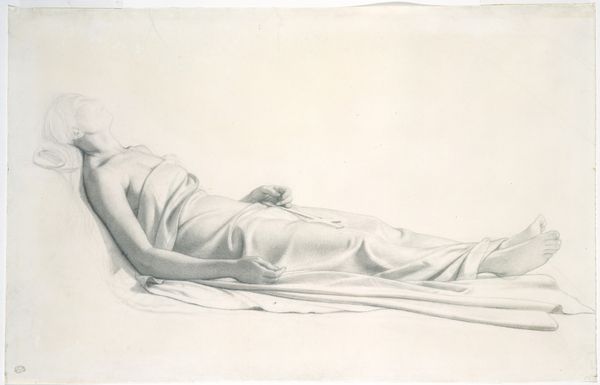
Grafmonument van jonkheer Jan Hendrik van Kinsbergen in de Nieuwe Kerk te Amsterdam 1911
0:00
0:00
Dimensions: height 157 mm, width 222 mm
Copyright: Rijks Museum: Open Domain
Curator: I find myself immediately struck by the melancholic stillness of this photograph. There's a sense of somber dignity, even behind the forbidding fence. Editor: Indeed. What we are seeing is a photo from 1911 depicting the tomb of Jan Hendrik van Kinsbergen, a Dutch naval hero, inside Amsterdam's Nieuwe Kerk. It memorializes a complex figure who was both celebrated and critiqued in his time. Curator: Complex indeed! You get the feeling there's a whole novel hiding beneath that stone effigy. The way the light catches the folds of his robe almost makes it seem he’s about to rise. Editor: The memorial, itself, speaks volumes. Kinsbergen, celebrated for his naval victories and service to the Dutch Republic, also represented the complicated legacy of colonialism and its profits. He profited considerably from colonial resources which is certainly at odds with our current perspectives and thinking around historical accountability. Curator: You know, I’m also taken by the photographer's choices here. They've intentionally framed the monument through the iron bars, which gives a feeling that access to the real story of Kinsbergen is blocked and that he remains both literally and figuratively 'on a pedestal.' Editor: That feels accurate. Monument culture has gone through many changes as have its interpretation. Memorials reflect not just an individual but shifting socio-political values. Who do we choose to immortalize in public spaces? The monument forces us to question our definition of hero. Curator: Which leaves you musing on heroism. Kinsbergen obviously represented a certain version of that in his time. The quiet permanence of the monument suggests a man of enduring influence, or, at least, enduring presence. But history always asks us to reconsider our heroes, doesn't it? Editor: It absolutely does. Monuments aren’t passive relics; they're active participants in conversations about national identity, historical narratives, and the ethics of remembrance. In this case, what values we consider to be most virtuous is something which must constantly be debated and questioned, or history runs the risk of repeating itself.
Comments
No comments
Be the first to comment and join the conversation on the ultimate creative platform.
